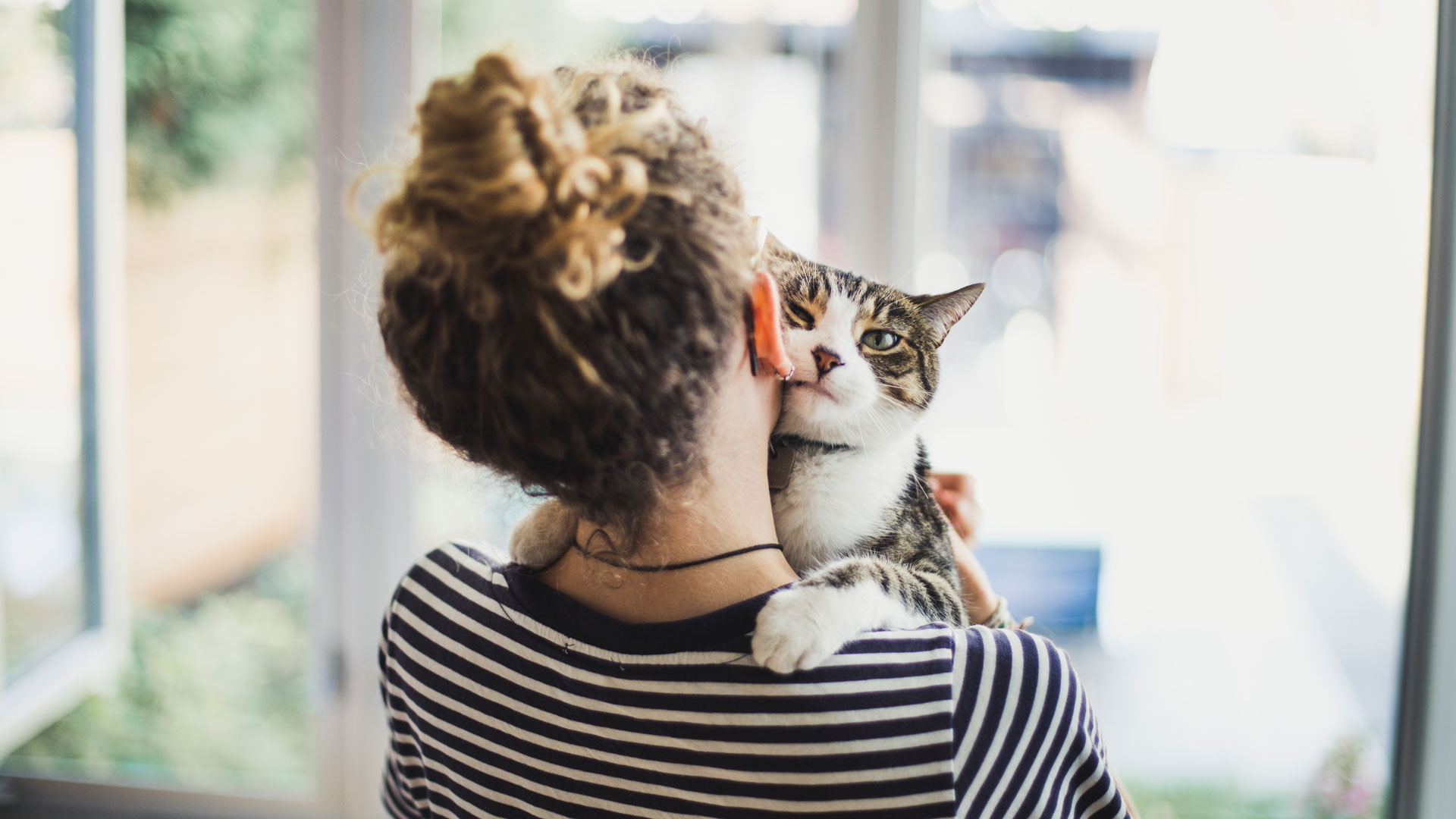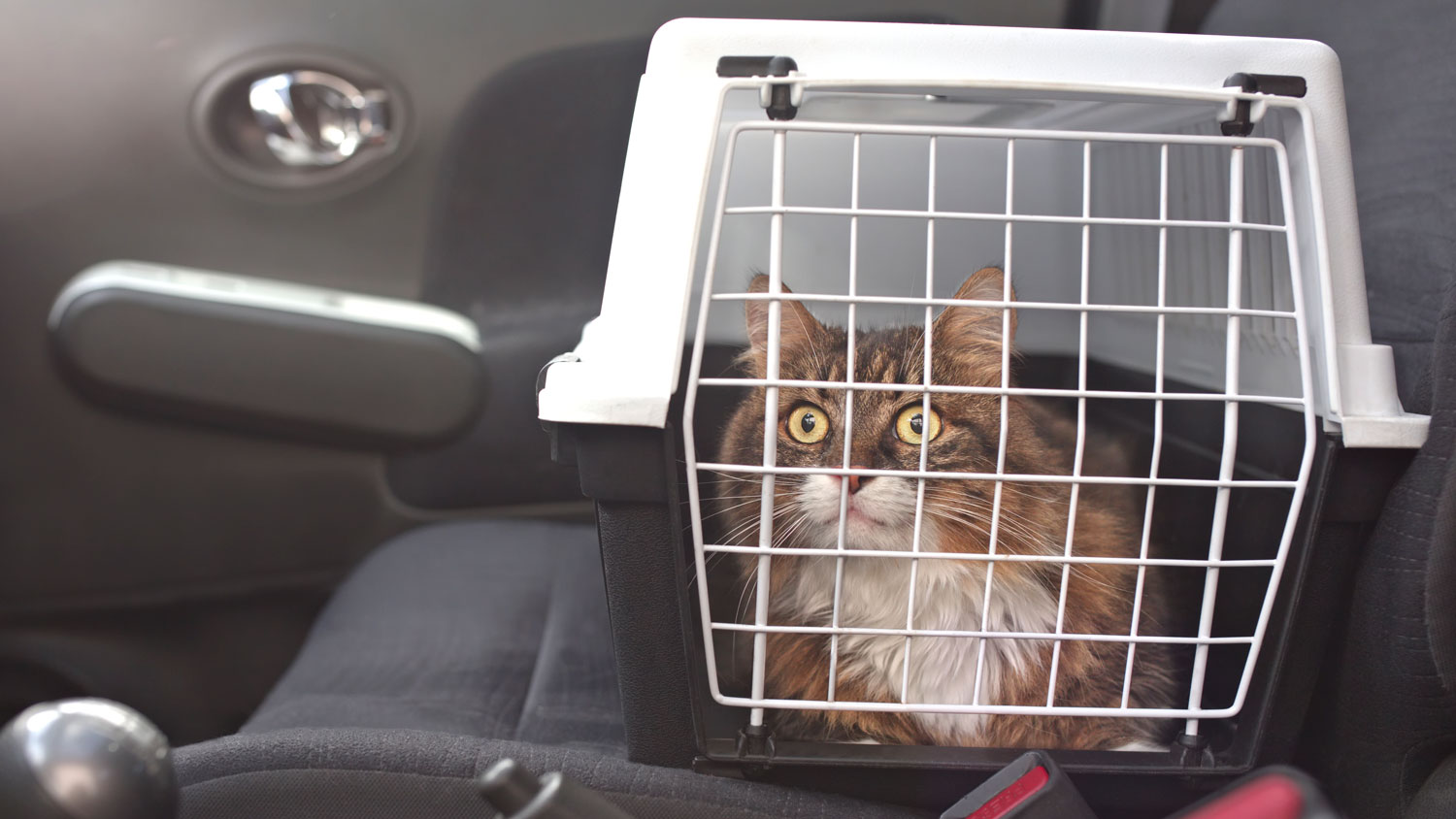How to carry a cat (without getting scratched)
Want to know how to carry a cat without getting scratched? Follow our tips on how to pick up your pet without fear

If you're wondering how to carry a cat without getting scratched, you're not alone. While the vast majority of cat owners are blessed with pets that positively enjoy being picked up, carried around and cuddled, there are still plenty whose furballs really aren't so keen.
Most domestic cats will have been handled by people when they were kittens, so they're largely used to being picked up and carried around. And if you acquired your cat from a reputable breeder or from a loving home's litter of kittens, it probably came to you ready to be picked up (and of course if your own cat has had kittens, it's your job to ensure that they get used to being handled at an early age).
However if you have rescue cats, you can't be quite so sure that they'll want to be carried around; they might have had a bad experience with a previous owner, or they might not have been handled enough as kittens, and you may find that they react badly when you try to pick them up.
Sooner or later, however, you're going to have to get that cat used to being carried about, even if it's only to put them into a comfortable cat carrier for a stay at the cattery or a trip to the vet. For the basics of picking up and carrying your cat, read on for all the tips you're likely to need to make your moggy more portable.
- Best cat carriers: Keep your cat cozy and safe on your travels
- Preparing for your kitten's first vet visit
- How to transport a cat without a carrier
How do I get my cat used to being picked up?
How do you pick up a cat that doesn't want to be picked up? Even if it panics when you try to pick it up, it's possible to turn that situation around. Depending on how resistant your cat is to being carried, it may take a while, and it'll require persistence, a calm demeanor and plenty of treats. Follow these steps for as long as it takes:
1. Choose your moment
You can't just go picking up a cat any old time; choose a moment when it's in a friendly and affectionate mood, and definitely don't try starting it on its getting-picked-up training if it's scared or anxious; check out our guide to anxiety in cats to help spot and deal with the warning signs. If it's purring and rubbing up against you, that's the ideal time to start, ideally with your cat standing side-on to you.
2. Hands under the chest
The first thing to do is get the cat a little more used to being handled, and that means simply holding it under the chest with both hands, with a bit of gentle upward pressure.
Get the best advice, tips and top tech for your beloved Pets
Depending on your how your cat is about being touched, that might be a bit of a shock or a surprise for it; gauge its reactions, release it when it's had enough, and reward it with a treat and verbal encouragement. Repeat this stage until you can easily hold your cat this way without it trying to wriggle out of your grasp.

3. Gentle lifting
The next step is to introduce a bit of gentle lifting, so that your cat's front paws are off the ground but its hind paws are still on terra firma. Lift your cat and hold it in position for as long as it'll take it, then lower its front end back to the floor. Again, reward it with a treat and encouragement, and repeat until it's taking this step in its stride.
4. Hands under chest and abdomen
This is where things could get scratchy; as we all know, cats can be a bit funny about having their tummies touched. But for the next step you need to get it used to being held under the chest and the abdomen, with a bit of gentle upwards pressure as in step 2. Persistence, treats and encouragement are again the key here.

5. More gentle lifting
Once your cat's used to your hands being down there, you can try some more gentle lifting. Start with upwards pressure, lead on to lifting its front then back paws off the ground – taking care to note how it responds so you can be ready to put it back down if it starts to panic. If your cat's amenable, you can try lifting it a little higher each time; don't forget treats and praise after each attempt.
How to carry and hold a cat
Every step so far has been about desensitizing your cat to being handled and picked up, and if you've got this far you should be ready to carry your cat without getting scratched. Here's what you need to know:
1. Pick up your cat
Once you've mastered picking up your cat, as per steps 1-5 above, you should then be able to transport them with ease.

2. Keep your cat properly supported
While holding your cat under the front legs and abdomen is the best way to pick it up, it's not the best way to carry it around. A cat likes to feel supported, and that means having its hind legs resting on something; to achieve that you need to keep holding it under the front legs, but switch the position of your other hand so that it's under its hind legs and your cat's hindquarters are cradled in the crook of your arm.
Depending on your cat, this could take a while to get used to, so take things gently if you need to. One way to make things less hair-raising for kitty is to get it used to having its hindquarters touched, as that can be a fright at first. A gentle tap followed by a treat and praise, repeated as many times as is necessary, should do the trick.
3. More tips for carrying your cat
Still unsure about picking up and carrying your cat? There's more than one way to pick up a cat, and this helpful video from Helpful Vancouver Vet Dr. Uri Burstyn (and the very accommodating Claudia) will give you all the tips and encouragement you need, including the golden rule of cat restraint: provide them with ample support.
How to pick up a cat without hurting it
Honestly, it's highly unlikely that you'd ever hurt a cat by picking it up; they're tough little cookies, and if a cat doesn't want to be picked up then you're more likely to end up getting injured than the cat. Follow the steps above and you should be good to go.
How to transport your cat safely

Getting to a point where you can pick your cat up and carry it without getting scratched is all well and good, but actually transporting it somewhere safely is a whole other matter.
If you're worried about taking the next step after carrying your cat, we're here to help. See our guide to how to get a cat into a carrier (and in case of emergencies, we also have a guide to how to transport a cat without a carrier and how to get a scared cat to the vet), and read our tips on traveling with a cat, whether it's by plane, train, or automobile.
Conclusion
Even if your cat doesn't like to be picked up, with persistence and the right motivation you should be able to get it to a stage where it at least accepts occasionally getting scooped up without shredding your arms in a panic.
Be aware that the amount of time it'll take can vary depending on the cat, and that some cats with a deeply-ingrained distrust of being handled may never come around. But by following the advice above you'll have the best chance of success; sort yourself out with some tasty cat treats and start training today!
In this feature, we answer: 'Why does my cat scratch the walls?'
Jim is a writer, performer and cat-wrangler based in Bath, who last year adopted a pair of sibling rescue cats who turned out to be effectively feral, and has spent a lot of time since then trying to get them accustomed to people (some success) and each other (ongoing project).


